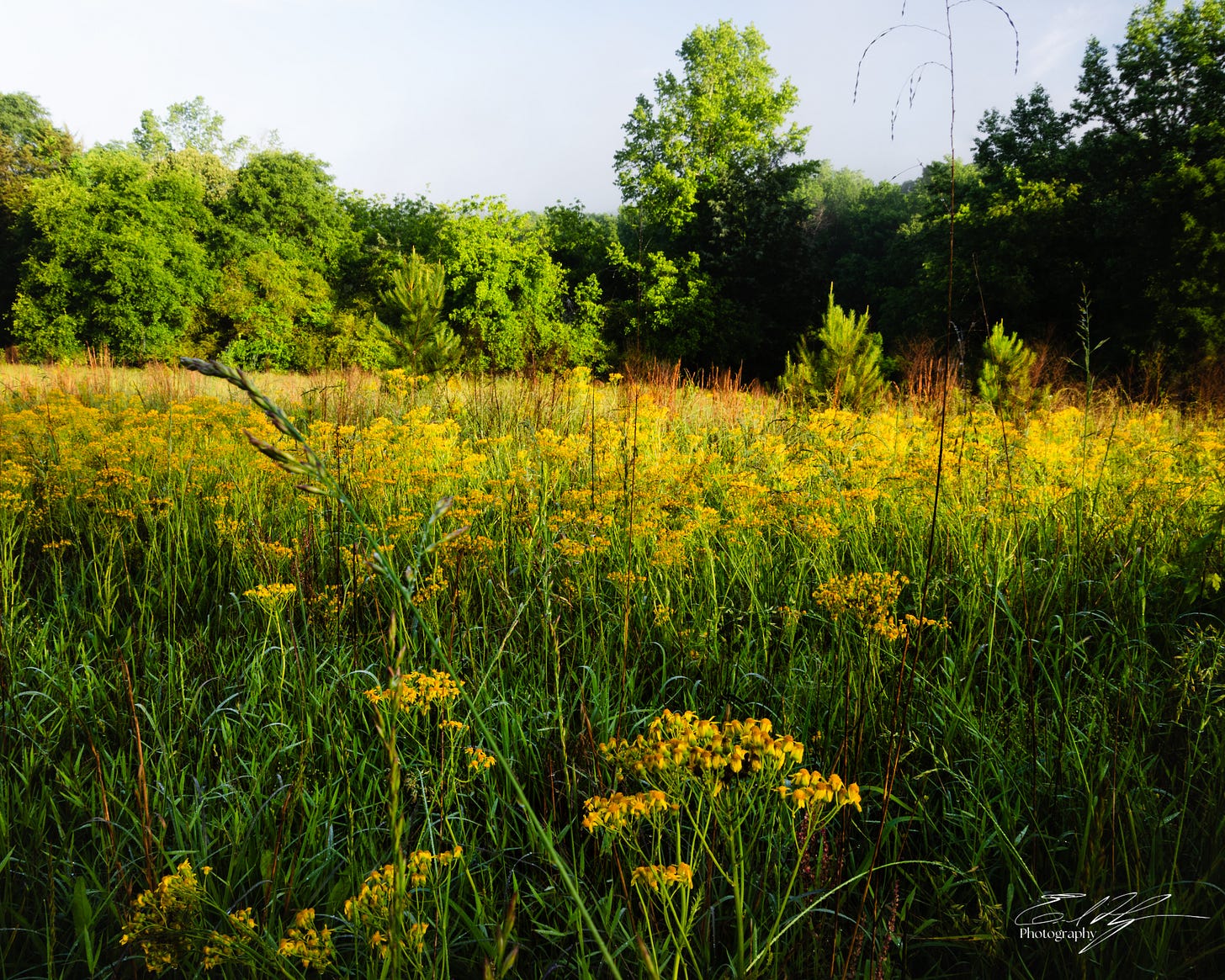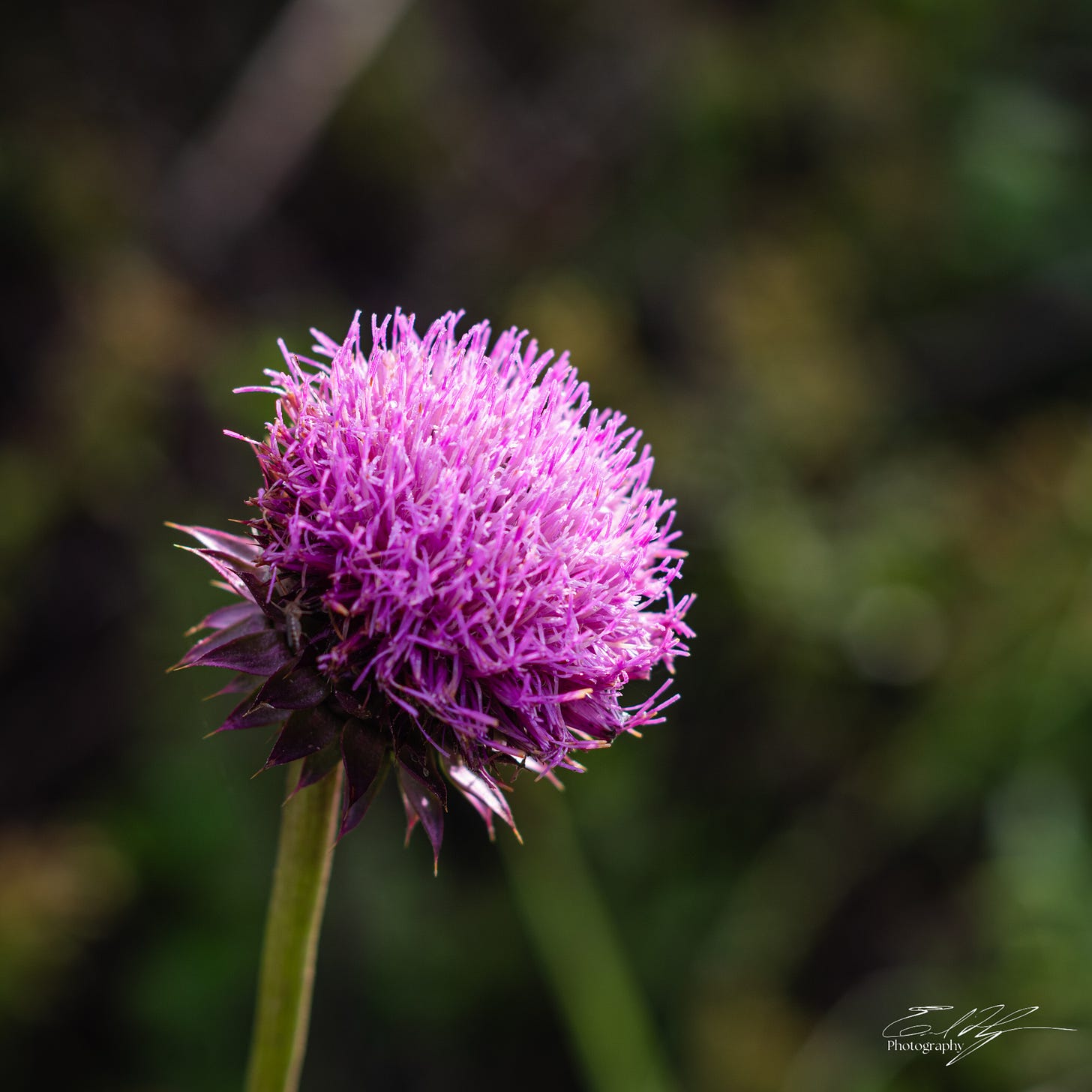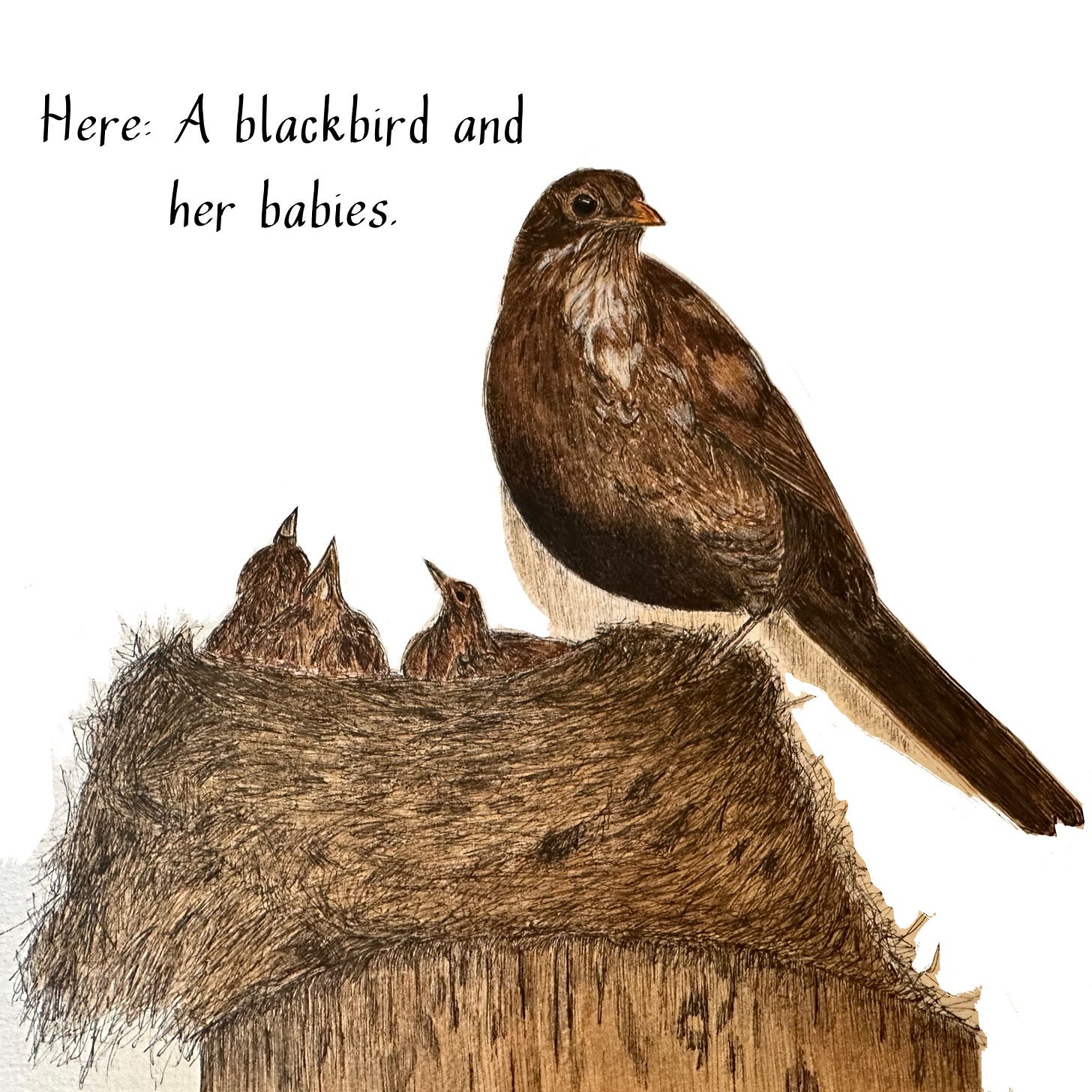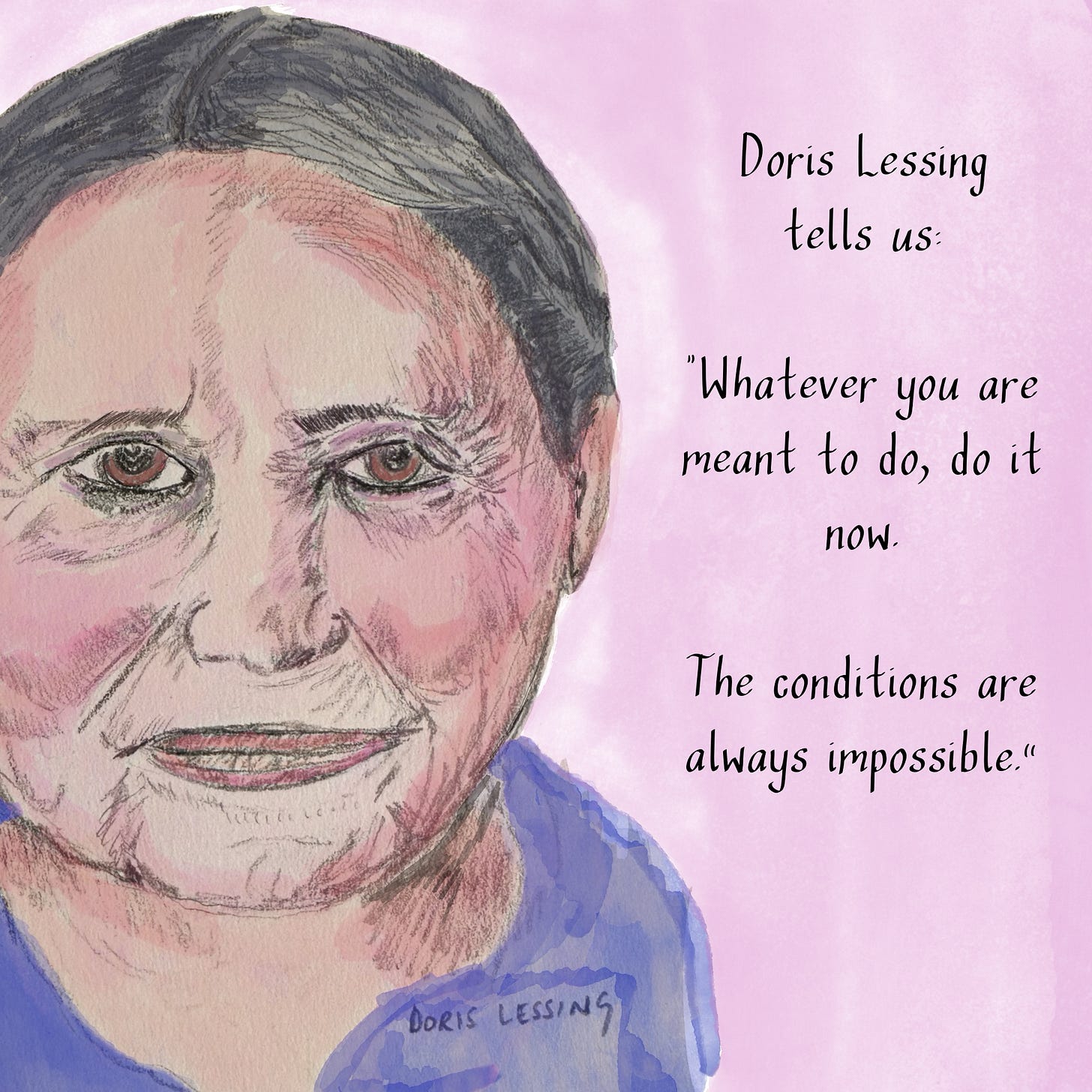🍃 10 - 13 | NatureStack: shared wonder
March - June 2025: Poetics of Place
Note to readers: this special edition is best read in your browser.
“On the last day of the world, I would want to plant a tree.”
The poet
has been writing about why we need poetry in times of crisis. So much we love is under threat, if not outright attack. Emotions are high, unmanageable, unfixable.“A burst pipe can be fixed with practical knowledge, materials, working hands and working will. For other crises – the kind not amenable to immediate and practical solution, the kind before which a person may feel almost entirely powerless – what’s needed is something else, something that lives in art, story, music, myth, poems.”1
To that end, this edition of NatureStack features poetry, writing about poetry, visual art, and music—all inspired by, and sourced from, our beloved Mother Earth.
“[Y]ou need to find some way to get through each day, then the next, without being spiritually and emotionally flattened. Unflattening is one of art’s tasks.”2
Lucky for us, unflattening is everywhere on Substack.
offers this:“‘You find those poets who can put you into a trance, who can move you down into the depths,’ Marie [Howe] told me in that same conversation. I say poets, but it could be prose writers. It could be any artist who moves you more deeply into yourself.”3
Side note: Marie Howe is wonderful. I wrote about meeting her in this post about synchronicity.
For this issue, I’ve prepared a Solstice feast featuring poetry by
, , , , and . Music by . Photography by and drawings by . The cheese course is hope and good news, courtesy of Krista Tippett and . And do save room for dessert! I have some news and a short survey at the end to help plan new projects.Here’s poet Ada Limón with the toast:
“You might not know this, but poems are like trees in this way. They let us breathe together. In each line break, caesura, and stanza, there’s a place for us to breathe. Not unlike a redwood forest or a line of crepe myrtles in an otherwise cement landscape, poems can be a place to stop and remember that we too are living. W.S. Merwin wrote in his poem, ‘Place’: ‘On the last day of the world, I would want to plant a tree.’ I think I would add that I would also like to write a poem. Maybe I’d even write a poem about a tree?”4
In further service to Substack’s nature writers,
curates this lovely directory of nature-focused writers. It’s organized by region and topic and, if you’re a nature writer yourself, easy to get listed.Now let’s dive into the poetics of place.

🍃 Wonder
David E Perry, The Red Dragon in The Storm
Treat yourself; listen to David’s spacious, patient narration while gazing upon his glorious dragonfly photograph. The experience will slow you down into the marvelous mystery, and prepare you for his final, wise and hopeful words.
“He was …in search of poems, you see, or at least the strands of spider silk that might become poems, given time. Time enough to find their way, to quiet his busy mind, to breathe past the recent losses of friends, the shortening realms of future …and shape-shifting fears.”
Kendall Lamb, What I Really Want to Do
Kendall’s poem is gorgeously moving with gentle humor, lush images, and open-hearted honesty. I’ve had a long love-affair with final lines of poems that jolt me awake and deliver life-saving truth I didn’t know I knew. I’ll resist sharing the final line here, so you can experience the poem’s full effect. Here’s the opening:
"We forget that our ancestors were fish who, against all odds, sprouted limbs and gasped out of ancient seas to give gravity a chance."
James Roberts, There's an owl in the house!

When James shared a fragment of this poem on Notes, I was intrigued. Who can resist an invitation to “dive into the cracks of the underworld?” He generously offered to unpaywall the post so we can experience the strange grace of the poem in its entirety. Here’s a hint of what’s in store: “The owls have been calling on my dusk walks of late and they insist they get a story of their own.”
Emily Charlotte Powell, The Artistry of Nature
Emily creates an artful balance of poetry, audio, and photographs that goes straight to the heart. In a poem full of lush images (both verbal and visual), one of my favorites is her description of a wasp’s nest: “A paper cathedral crafted from chewed bark and spit.” Here is an amuse-bouche. The full experience is as delicious as it is nourishing.
“We wander through her gallery Thinking ourselves creators, Yet every masterpiece we make are only echoes of a song she has already composed.” “There is no beauty we have imagined that she did not shape first in root and rock and bone.”

Troy Putney, The Moment a Storm Passes
Poetry, like caffeine, can be a friendly jolt to the heart. There’s a question in
’s poem like that: “What else have I withheld / from those I love?” It made me want to be a better person.I placed my indoor plants outside
so they too could feel cool rain
upon their tender leaves,
to taste clouds within their soil,
to feel the breeze brush their necks
and teach their roots
how to dance with Earth.Jonathan Potter, The One Moment
Jonathan Potter narrates a momentary encounter that is anything but casual. The tree is “aloof but kind,” and isn’t that just like a tree? I’m obsessed with structure and form, so on closer reading, I was delighted to realize the poem is a sestain in rhyme form ABABCC. It wears its structure lightly, allowing the images and emotions to shine through.
🍃 Immersion
Fog Chaser, a bright & shining place
Fog Chaser’s musical reflection on the saturation and brightness of the Sonoran Desert opens with this evocative observation:
“In the language of the Tohono O’odham, the term most akin to “desert” is “tohono.” It can best be translated as “a bright and shining place,” that is, a place of reflectance and, perhaps, of human reflection.” Gary Paul Nabhan, The Nature of Desert Nature
🍃 Story
Andrea Gibson, Come see me in the good light
Recently, I went with a friend to see Ryan White’s 2025 documentary about poet
’s journey with ovarian cancer, “Come See Me In the Good Light.” I love her newsletter and have often been made breathless by her spare, vulnerable, truthful poetry. (At one point in the film, she jokes that her editor accused her of rearranging the same five words over and over to create different poems.)Andrea Gibson expresses like no other the priceless, fleeting gift that is this life.
“I love penguins, though I’ve never met one. . . . I love imagining I am a bird who is imagining what it’s like to be human in the dead of winter, wearing an upside-down nest made of yarn atop the head. . . . I love daydreaming about the pep talks butterflies give to depressed caterpillars. . . . I love the romance of merge signs. . . . I love watching children realize that the seashells on the beach are free. . . .”5
In this post,6 she introduces a new poem that acts out the tension between head and heart:
“I know I’m not the only one whose mind wants to trap them right now. The weight of everything—personal struggles, a world in pain, the fear that nothing will ever change—can make it hard to breathe. But I believe that there is another way. That loosening our grip on what we think we know will be exactly what saves us. Not just as individuals, but collectively. Imagination isn’t an escape; it’s an act of liberation, a door flung open to something wildly new. The freer we become inside ourselves, the freer our world will be.”
The poem itself, “What’s Real?” touched some very deep truths in a light way that felt both familiar and holy.
She closes with this: “Wherever you are, whatever you’re carrying, I hope you find a moment today that reminds you: there is more to this life than what the mind insists.”

🍃 Hope
Krista Tippett, Hope Portal
I’m participating in a weekly community gathering, convened by my dear friend
, to explore hope as a practice, a muscle, a fierce calling. We listen to brief notes from Krista and her guests—people like Adrienne Maree Brown and Naomi Shihab Nye, then journal to a couple of juicy questions and gather on zoom to talk for an hour. 7So far, we’ve explored the relationship between despair and hope, inner and outer work, spiritual and neural muscle memory, imagination, and emergence. Adrienne Maree Brown describes imagination as a form of time travel, which is brilliant. We imagine the future, we consort with the ancestors.
“What was Harriet Tubman doing? I’m obsessed with Harriet Tubman. [laughter] I’m obsessed with, what was it like to walk in her shoes and to face her fears? So I always want to reach back and be like, OK, well, now what is the Harriet Tubman activity to do in this time? And what is Harriet Tubman up to in 2063? Because there’s always someplace that needs justice and liberation.”
Amanda Royal, Hopeful headlines
Here on Substack, Amanda Royal consistently delivers good news, this month about rivers, wetlands, sturgeon, gorillas, butterflies, puffins, bees and clean energy. This issue is impossible to summarize here, but a highlight for me was the “bee-removal video that went viral on TikTok.” The images are stunning, but her chill narration makes it.
🍃 New (old) directions
I’ve been moving through the past few weeks with the title (and final stanza) of Rumi’s poem, “Say Yes Quickly” running on loop in my head.8 When I first heard it years ago, it felt like a summons. Back then, it took more than a year for me not only to grasp its message but to pluck up the courage to act on it. Now, I’ve been asking, Say yes to what? and trying out various ideas that have led deeper into a maze of possibilities.
One thing is certain: I need to let some things go. Including this journal, NatureStack. It debuted one year ago with much energy. I have loved every minute spent reading and curating your brilliant writing, beautiful artwork and photography, and the sublime music. My longing for Substack to have a dedicated Nature category hasn’t abated. I’ll continue to treasure my interactions with the wise, talented writers and artists I’ve met through this project. Your creative work and friendship inspire and sustain me.
🍃 Survey
S.E.Reid’s advice in a recent Note confirms that it’s a good time to play and experiment a little. Before I plunge in, I’m curious what might interest and appeal to you. I’ve studied my stats and analytics and have some theories, but it’s more fun to hear directly from readers.
Please follow this link to respond. Thanks!

🍃 Housekeeping
What did you enjoy most about this final edition of NatureStack? I always love to hear from readers.
If you enjoyed this post, a lovely ❤️ keeps me going. Another way to help others find great nature writing on Substack is to share this post by restacking it on Notes, via the Substack app. Thanks!
Read about more marvelous nature writers in the Reciprocity interview series. This year has featured
, , , , , , , , , , , and . Next week, we’ll be joined by .
From “Provisions, Footholds, & Buttresses: Poems in a Time of Crisis, Part 1,” read it here
From “Poems in a Time of Crisis, Part 2: Tenderness,” read it here.
“Introduction,” You Are Here: Poetry in the Natural World, Ada Limón, ed., Milkweed Editions, 2024.















You curate these these so beautifully. I’ll miss them! But I’m sure your creative, collaborative and devotional energies will find new and fresh avenues for expression.:)
What an honor to be included in this wonderfully curated round up, Julie, thank you! I love so many of these poets and authors, and can't wait to dive headlong into the work of those I've yet to discover. 💚